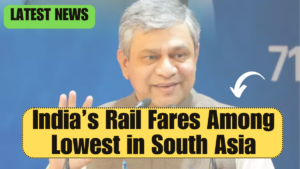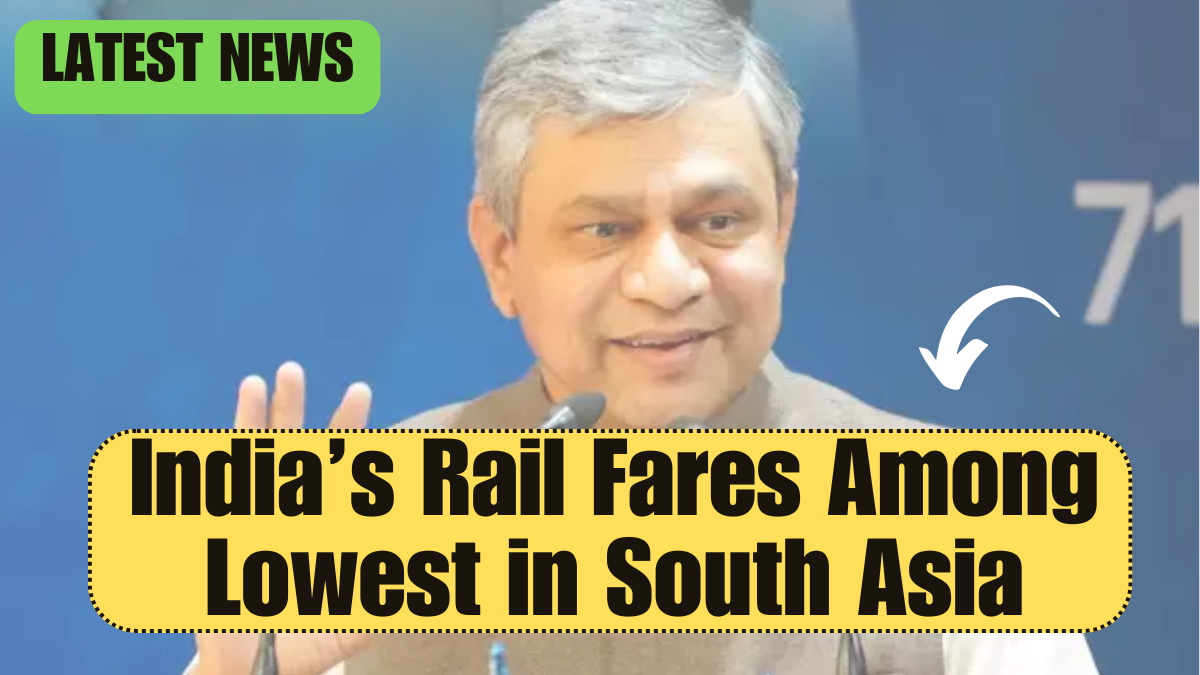Railway Minister Ashwini Vaishnaw, while addressing the Lok Sabha during the discussion on the Demands for Grants under the Ministry of Railways for 2025–26, emphasized that India’s railway fares are far more affordable than those in neighboring countries. He cited comparative data that showcased India’s commitment to affordable travel while investing in safety and modernization.
Vaishnaw pointed out that Indian train fares have remained unchanged since 2020, and despite inflationary pressures and increased operating costs, the government has prioritized keeping public transport accessible for the masses.

How India’s Rail Fares Compare Internationally
According to the data shared by the Railway Minister:
-
For a journey of 350 kilometers:
-
India: ₹121
-
Pakistan: ₹436
-
Bangladesh: ₹323
-
Sri Lanka: ₹413
-
In contrast, Vaishnaw mentioned that fares in European nations are over five times higher than those in India for comparable distances, underlining India’s emphasis on economic inclusivity and public welfare through subsidized transport.
Focus on Safety and Modernization
Vaishnaw also addressed concerns around railway safety, citing a 90% reduction in train accidents over the past 20 years. He credited this to increased investment in safety measures and the use of cutting-edge technology introduced under the leadership of Prime Minister Narendra Modi.
New systems like Kavach, India’s indigenous train collision avoidance system, and large-scale infrastructure upgrades have contributed to improved safety standards.
He assured the House that railway safety remains a top priority, with funds being allocated toward both physical infrastructure and technological innovation. The government has adopted a long-term vision that balances affordability with safety and modernization.
Why Rail Fare Policy Matters
Train travel remains the backbone of affordable transport in India. With millions relying on trains for daily commutes and intercity travel, the government’s decision not to raise fares even during financially challenging periods reflects its commitment to inclusivity and social welfare.
The comparison with neighboring and European countries is also significant in countering narratives that India is underinvesting in rail infrastructure. Despite low fares, Indian Railways has managed to enhance safety, roll out new trains like Vande Bharat, and continue ambitious projects such as station redevelopment and electrification.
India’s Railways Remain a Lifeline for the Masses
Railway Minister Ashwini Vaishnaw’s remarks highlight the government’s balanced approach—keeping travel affordable for the public while investing in safety, technology, and modernization. As other countries struggle with rising transport costs, India’s fare structure continues to serve as a social equalizer. With massive improvements in infrastructure and a sharp decline in accidents, Indian Railways appears to be on track for a future that’s safer, faster, and more inclusive.
Click here to know more.
